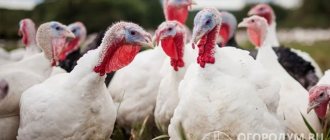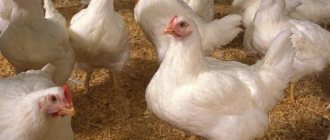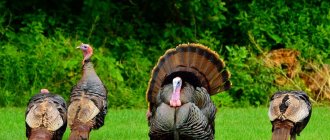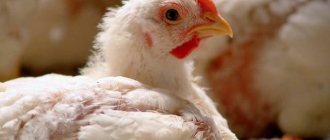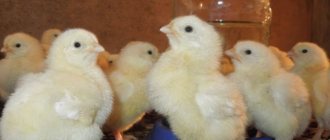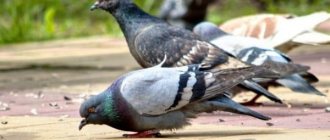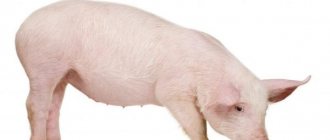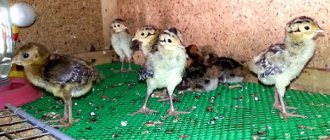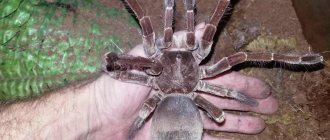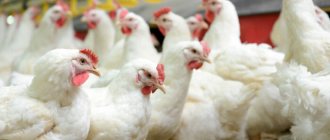Home » Articles about turkeys » How to fatten turkeys
Turkeys are considered one of the fastest maturing among poultry. They quickly gain the required weight for slaughter, and one adult can produce approximately 20-25 kg of high-quality meat. Producing meat is the main purpose of turkey breeding. For active growth, they require a specially calculated diet, competent selection of feed and nutritional components.
Top tips for feeding turkeys
Feeding turkey poults can be problematic. In order not to harm the health of the bird, it is worth remembering simple tips:
- For the purpose of prevention, it is recommended to add potassium permanganate to the water of birds.
- Food must be served fresh. For one feeding, a portion is allocated that can be eaten in about half an hour.
- Food should not stagnate in the feeder, as it will quickly develop pathogens that can harm the birds.
- You can add pine needles as an additional source of vitamins and minerals - they contain a lot of carotene.
- In no case should you use compound feed for cattle and pigs for feeding, since the mixtures contain a lot of salt and fiber. High salt content negatively affects the body of turkey poults, they can even die.
- Turkeys need gravel; under no circumstances should it be replaced with sand or shell rock.
- It is recommended to maintain perfect cleanliness in the poultry house. Poults can easily get sick from unsanitary conditions.
Place for females
Along with the generally accepted conditions for keeping turkeys, it is necessary to determine the location of the females in the poultry house. In a selected corner, nests are placed in which individuals will begin to hatch eggs. It is very important to install the nesting box in such a way that relatives cannot reach the clutch. Otherwise, the birds will begin to break the shell with their beak and eat it along with the contents.
For more comfortable incubation and laying, it is recommended to select an appropriate nest site. It is recommended to arrange a place for females in more secluded and protected corners of the room. The lighting there should be dim so that individuals feel safe and quiet. The twilight also prevents other birds from congregating near the female territory.
It is important to pay attention to the installation of nests. Experienced poultry farmers recommend building a small bench at a height of 30 cm from the floor. Females will easily jump onto a shelf with clutches and incubate eggs in conditions that are more comfortable for them. This height does not allow the nest to freeze, and will also protect the masonry from other birds.
If there are a large number of individuals, it is allowed to create entire steps to a height of no more than one meter from the ground. Several tiers for turkeys allow you to choose a convenient place for yourself.
Note! Female turkeys are loyal to the clutches of other turkeys, so it is possible to install one nest for several individuals at once. They will take turns incubating the eggs.
The location of the tiers for perching should be away from the entrance to eliminate possible drafts when the breeder enters. The rest of the birds are recommended to make ash baths, where the birds will clean their plumage, preventing the appearance of parasites on the body.
What to feed turkey poults depending on their age
It is very important to consider the question of what to feed turkey poults at home, depending on their age, to quickly gain height and weight. You can use both complete food and self-prepared food.
Feeding turkey poults from the first days of life
Because newly born birds do not have a swallowing reflex, they may be reluctant to eat. You need to carefully open the turkey's mouth and put food there.
It is best to give chicks food that is nutritious and easily digestible. For example, a boiled egg, low-fat cottage cheese, chopped greens. Portions should be small, feeding is carried out once every 3 hours. For drinking, lightly boiled water with a small pinch of sugar is suitable.
Over time, the breaks between meals increase. The menu is also becoming more diverse, including the following products:
- wheat bran;
- boiled millet;
- grated chalk;
- low-fat fermented milk products - yogurt is best;
- skimmed milk.
Expert opinion!
Larisa Nemtsova, veterinarian: “New products should be introduced into the diet gradually and carefully, in small portions. It takes time for a bird's body to adapt to food. By the way, the optimal number of feedings for newborn chicks is 8-9. When using the intensive cultivation method, some farmers offer feed to their clients, which is also acceptable.”
Feeding week old chicks
At one week of age, the diet significantly expands. You can leave boiled eggs and fermented milk products on the menu, and also add porridge and dry grain mixtures. For greater variety, sunflower meal, chopped peas and boiled potatoes are used. There must also be mineral supplements - for example, chalk.
An important component of the menu is yeast and a little bone meal. Fresh herbs are also relevant. Birds should have free access to water, because after certain foods they become very thirsty.
The larger the turkey poults become, the less often they need to be given food. The portion increases. It is advisable to develop a clear schedule.
2 weeks
What to feed turkey poults at home when they reach two weeks of age is a difficult question, since their appetite increases significantly. Eggs are removed from the diet - giving them is no longer practical and profitable. The main menu consists of the following products:
- liquid grain mixtures, seasoned with skim milk or yogurt;
- dry mixtures prepared from carefully crushed beans, wheat, oats, barley, with the addition of sunflower cake and meal;
- moderately chopped greens: dandelion, onion, nettle;
- some low fat cottage cheese;
- bran;
- mineral sources;
- sometimes you need to give a little pine needles and hay.
Monthly chicks
As soon as the chicks turn one month old, their menu is adjusted again. The diet is based on liquid mixtures, filled with skim milk or water. It is advisable to make the product half from greens, half from grains and chopped vegetables. You can put salt in food, but in small quantities. In the morning and evening they offer wheat, buckwheat, oats or barley, and peas. There is no need to grind them.
Expert opinion!
Larisa Nemtsova, veterinarian: “Every day the menu should also include mixed feed - specifically for turkey poults, not for other livestock. It is important to ensure that the product is suitable for the age of the chicks. This information is indicated on the packaging."
Cottage cheese can sometimes be given as a treat, since constant feeding of it leads to high expenses. Sources of minerals should still be on the menu.
Feeding two-month-old turkey poults
At this age, you can include whole grains in your diet. You should slowly increase its amount to 50% of the total feed. You can also include bran or crushed corn kernels in your menu. They promote weight gain, so these products can be left until slaughter. Carrots, dried nettle leaves, pine needles, and boiled potato peels are also useful.
3 months
At 3 months, the daily portions change, not the diet itself. Chicks should receive enough meat and bone meal, bran, and grain. Greens are given 150 g per turkey. You should slightly increase the amount of salt and minerals.
After 4 months
At this age, turkeys can already eat feed for adults. They also like balls made from oatmeal or corn flour, bran and yeast. They are cooked in water.
Walking pens
To prevent obesity, the bird needs space for physical activity. Walking pens are usually created for the summer. When fresh grass begins to grow, the sun comes out. Of course, birds can also receive fresh vitamins.
Inexperienced breeders should know that turkeys can fly. Of course, for short distances, but this is enough to fly over the fence and leave the yard. There are two ways to prevent escapes from your wards.
1. Create a pen with a mesh roof. As a rule, a garden net is used, which is mounted on top of the fence in the form of a roof. A fairly common method that ensures that all birds are in their place;
2. Wing clipping. This is a radical measure that should only be carried out by experienced farmers in exceptional cases. For example, with a small number of individuals and many years of experience in keeping birds. Of course, in large productions no one will trim wings.
When arranging a paddock or enclosure, it is very important to take into account some aspects and requirements for a place for walking. First of all, it is necessary to provide a shading angle where, in hot weather, birds can hide from the sweltering rays of the sun. Slate or other covering material is perfect for this, which is simply placed on the mesh roof, creating a shadow.
Walking turkeys
Individuals that are 1 to 2 weeks old can be released for walks. The young animals can walk for no more than 20 minutes, then they should be driven back into the house. As you get older, your walks become longer. And full-fledged walking is allowed only after the birds are covered with real and thick plumage, eliminating sunburn.
Important! Walking turkey poults is allowed only in good, calm and dry weather. In other cases, it is better to abstain in order to prevent the risk of bird disease.
When the birds are accustomed to the street and spend more time outside the house, then a feeder and drinking containers should be placed outside. Walks for adults should be carried out not only in summer, but also in winter.
An important condition for walking is the thermometer readings; they should not be lower than 20 degrees Celsius. In this case, it is recommended to lay a thick layer of hay or mown grass on the bottom of the enclosure. Such events will not allow the birds’ paws to freeze and get sick, and during the walk the birds will actively eat dry grass.
Feeding broiler turkey poults
Broiler turkeys are bred to quickly produce meat. It is most convenient to use ready-made mixed feed for feeding, which is balanced in proteins, fats and carbohydrates. It is very important to ensure that birds have free access to water, since a lack of it can cause intestinal problems or blockage of the crop.
It is advisable to add fish oil and sunflower oil to the mixture. Food, of course, is selected according to the age of the chick: The specific amount is selected as follows:
- 0-4 weeks: 10-35 g, feeding 6 times a day;
- 5-13 weeks: 50-200 g, feeding 4-5 times a day;
- 14-17 weeks: 350 g, in the last weeks of fattening, feeding up to 5 times a day plus limiting the activity of the bird.
Breed selection
Before you get turkeys for breeding, you need to decide on the breed. For beginners, especially for those who are trying their hand at poultry farming for the first time, it is recommended to take ordinary village birds. Such babies or the parent herd can be found among friends or through advertisements. This bird is distinguished by excellent immunity, unpretentiousness in matters of feeding, and also forgives many mistakes in its conditions of detention.
If you have a little experience, an unpretentious purebred bird will be a good choice. Of the breeds adapted to the middle zone, we can recommend the following: “Bronze Broad-chested”, “Slate”, “North Caucasian”, “Moscow”.
Based on the “Bronze Broad-chested”, various breeds and crosses have been developed that are well adapted to the climate of individual regions
Having gained sufficient experience, it makes sense to try breeding broiler turkeys.
Broilers, contrary to many articles on the Internet and the assurances of bloggers, have very weak immunity. They react negatively to any violation of housing and feeding standards. And the requirements are most often quite strict: strict temperature and light conditions, clear rationing of the diet, timely drinking and other nuances. Neglecting at least one of the points can result in the death of the entire herd in a very short time, which becomes a bitter lesson and implies significant financial losses.
The next important point to guide your choice is the main purpose of keeping the bird.
If breeding work is planned, then it is not possible to achieve success with every breed within the framework of a household plot:
- not all breeds, especially crosses, are bred “in themselves”;
- for subtypes that are too large, artificial insemination will be required;
- it is necessary to take into account the popularity of the breed in the region in order to simplify the possibility of acquiring new producers.
Issues of artificial insemination often have to be resolved with the help of professionals
Some poultry farmers do not take into account the above factors, which leads to additional costs for the purchase of specialized equipment, long-distance travel to find new producers, additional training, etc. Ultimately, when faced with difficulties and disappointments, they simply stop doing breeding work.
What to feed adult turkeys
To ensure that turkey meat is as tasty as possible, the birds should be provided with adequate nutrition. The diet is as follows:
- up to 170 g of grain;
- up to 200 g of root vegetables;
- up to 40 g bran;
- up to 50 g of hay in winter and spring;
- up to 20 g of cake;
- up to 10 g of meat and bone meal;
- up to 250 g of greens per season;
- up to 10 g of mineral supplements.
Feeding should be carried out three times a day, and according to a strict schedule. In the morning and before bedtime they give grain, in the afternoon - mash and vegetables: beets, pumpkin, potatoes. You can add grain to your daily portion. It is worth noting that if the mash is not eaten immediately, it will have to be thrown away. So you should prepare one serving at a time.
Description of the species
Breeding broiler turkeys is considered a new direction in poultry farming. The live weight of one individual reaches 6 or more kg. For breeding, poultry farmers choose such well-known crosses as Hidon, Universal, Big 6, Big 9, which can gain up to 25 kg of live weight in a month. The birds have a rather massive body, a strong and large beak, which has a red fleshy appendage.
Important! Despite their heavy weight, broiler turkeys can run at fairly high speeds (up to 50 km/h), flying over fences up to 3 m high.
The broiler turkey breed requires careful handling, compliance with certain housing conditions, special nutrition and certain preventive measures aimed at preventing diseases.
What and how to feed turkeys before slaughter
To obtain high-quality meat, the diet of turkey poults becomes more saturated in 2-3 weeks. In some situations, it is even advisable to resort to force feeding. The lifestyle is also changing: the duration of daylight hours is decreasing. Feeding occurs in the morning and evening, at which time the lights in the house are turned on for an hour. After this, it is turned off so that the turkeys cannot actively move. This promotes weight gain. This technique is resorted to only in the last months before slaughter, adhering to the following recommendations:
- The diet is left unchanged, but enriched with potatoes, carrots, buttermilk and herbs.
- Grain is given only in sprouted form.
- It is necessary to yeast the feed to increase the bird's appetite.
- Feed is introduced in 2 stages: first, turkeys are given dry food in the form of mash. Then they offer a wet mixture to increase appetite.
- After dry or wet mixtures, it is recommended to feed the livestock with grass, vegetables and carrots.
- Turkeys need to be fed dumplings into their crops, which are made from the following mixture: 25% oatmeal, 20% corn, 20% barley and 15% wheat flour. Also add 5% yeast, previously diluted in warm water. The dough is formed into balls weighing 50 g. Birds can be given up to three dumplings per day.
- A regular diet requires a lot, about 800 g; dry mixtures are given up to 500 g.
Vaccination - prevention of diseases
Turkeys are sensitive to many types of viral and infectious diseases. To avoid mass mortality of birds, it is mandatory to vaccinate the chicks. A vaccination card should be created for chicks, where the date of vaccination and the name of the drug should be recorded.
This will protect little turkey poults from developing illnesses in the future. They may be threatened by viral diseases: smallpox, Newcastle disease - the disease is also called the Asian plague or pseudoplague.
It is known that Newcastle disease cannot be cured. This is an extremely dangerous infectious disease that, once it enters the body of a bird, develops rapidly. Individuals with weakened immunity die immediately. The incubation period passes after approximately two weeks. What can cause the disease?
The source of infection is sick animals infected with a single-celled parasite. The virus is transmitted through direct contact and develops rapidly. It is noteworthy that upon examination, the farmer, as a rule, does not observe any visible causes of the disease.
YouTube responded with an error: The request cannot be completed because you have exceeded your quota.
What to feed turkeys for rapid growth
Many farmers are interested in what to feed turkeys at home to quickly gain height and weight. It is necessary to properly organize the menu from the first day of life, especially if the bird will be fattened for meat. As you know, it should be slaughtered when it reaches a weight of 10 kg.
The first most important components of the menu are grains and legumes. They quickly and effectively saturate the body and also contain about 70% protein. Birds also need amino acids. To obtain them, they are offered meal and cake.
Another important ingredient in the diet is the bones of fish and animals. Naturally, they are carefully ground. They are rich in phosphorus and calcium, and therefore very important for birds. To make the meat tender and juicy, turkeys are given vegetable oils, fats, and nuts. Also, the food must contain vitamins that have a positive effect on future offspring: they are found in sprouted seeds, grass and dry food. You can also offer fresh cucumbers and other vegetables by chopping them with a grater.
Peculiarities
Despite the high rates of egg production, turkeys are most often bred for the purpose of producing meat. When selecting candidates for slaughter, owners first consider older individuals of both sexes, as well as some representatives of the young stock, which will not be used for breeding in the future. If there is an excess of males in the herd, they are also allowed to be slaughtered.
In general, breeding turkeys is a very profitable business - they grow quickly, their diet is not particularly special. In the private sector, it is extremely convenient to keep them, since in addition to regular food, they independently obtain their own food on the go - they eat insects and greens. At the same time, the slaughter yield of fattened turkeys is 80%, which is very profitable from an economic point of view. To fatten one head for meat, you will need approximately 25-30 kg of feed. Males consume more food, females much less.
An adult must have a certain weight before slaughter. With the right approach to feeding and keeping, turkeys gain weight quite quickly. It is believed that if a bird weighs more than 12 kg, then it can already be used for meat. The vast majority of turkey breeds gain the required weight by 30-35 weeks of life. With a certain approach (forced fattening), a turkey can reach 10-12 kg by 20-25 weeks.
Most meat breeds stop gaining weight by 6-9 months, so slaughter time should be calculated based on this period. It is worth considering that meat does not lose its taste and beneficial qualities, even if the bird is much older. Even three-year-olds are slaughtered.
What breeds of turkeys are best fattened for meat:
- White broad-chested (heavy type): male - 25 kg, female - up to 12 kg.
- Broad-breasted bronze: male - 18 kg, female - up to 10 kg.
- Canadian broad-breasted: male - 16 kg, female - up to 9 kg.
- Moscow Bronze: male - 15-17 kg, female - up to 10 kg.
- BIG6: male - 25 kg, female - 11 kg.
- Hybrid converter: male - 22-25 kg, female - up to 12 kg.
- BYuT8: male - 27 kg, female - up to 11 kg.
- Grade maker: male - 18-20 kg, female - 10 kg.
White broad-breasted turkeys
Why are vitamin and mineral supplements needed in the diet of turkey poults?
Vitamins and minerals must be included in the diet of turkey poults. What they need most is calcium because it helps them grow. In addition, such additives help improve the health of the bird. Vitamin deficiency negatively affects all organ systems and worsens the quality of meat.
Turkey poults can get the elements they need in the form of greens from the garden or meadow grass. Subsequently, vegetables and special additives are added to the feed.
Keeping young animals
It is very important to properly care for the young animals from the very beginning. Turkey poults need a warm and dry room, which should be heated with a heating pad. If you have the opportunity, use an infrared lamp for these purposes. This device will bring double benefits: it will not only create comfortable conditions for the chicks, but will also prevent cannibalism among the young.
You cannot keep many turkey poults in one place. Crowding will lead to outbreaks of infections, especially coccidiosis. The stocking density of young animals is no more than 10 heads per 1 m2. Another important thing worth paying attention to is that the chicks do not distinguish food from straw and sawdust. They can swallow inedible objects, which subsequently leads to health problems or even death of individual individuals. For this reason, the floor should be covered with cloth or newspapers.
What not to feed turkey poults at home
Birds under 10 months of age should not be given foods high in fiber. Coarse fibers negatively affect the condition of the digestive organs. The following products are prohibited for young animals:
- spoiled food;
- up to a certain age – whole grains;
- sweet and flour products;
- salt in large quantities;
- heavy cereals;
- poisonous herbs.
Food must be consumed in small portions for the gastrointestinal tract to function properly. Overeating is unacceptable.
Prohibited Products
To properly feed turkeys, you need to know what food you should absolutely not give them. Most of the bans concern food waste from the human table. The bird is not given:
- salty and spicy foods (herring, pickled and pickled cucumbers, marinades and hot sauces);
- snacks (chips, salted and sweet nuts, crackers with spices);
- confectionery products (chocolate, candies).
It is forbidden to give turkeys spoiled food - fermented, moldy, rotten.
Do not feed green and sprouted potatoes to the bird. This product contains poison - corned beef, which causes poisoning and death of the bird.
When letting turkeys out for a walk or preparing greens for them, you should pay attention to poisonous herbs, preventing them from getting into the feeder. This group of plants includes buttercup, henbane, datura, ash, hemlock, and St. John's wort.
Feeding rates for turkeys - table
There are certain standards for feeding turkeys that should be followed. The amount of food is indicated in grams.
| Feed | Days from the beginning of life | |||||
| To 10 | 10-20 | 20-30 | 30-60 | 60-90 | More than 90 | |
| Boiled egg | 3 | |||||
| Bran | 3 | 5 | 10 | 20 | 20 | 20 |
| Ground grain | 5 | 10 | 15 | 35 | 80 | 110 |
| Millet | 5 | 10 | ||||
| Broken wheat | 20 | 35 | 45 | 50 | ||
| Meat and bone meal | 1 | 3 | 8 | 15 | 20 | 20 |
| Low fat curdled milk | 30 | 20 | 25 | 40 | 50 | 50 |
| Cottage cheese | 8 | 10 | 5 | |||
| Greenery | 10 | 30 | 50 | 50 | 100 | 150 |
| Chalk or other mineral sources | 1 | 1 | 2 | 3 | 5 | |
| Salt | 1 | 3 | 5 | |||
Turkey for meat - what is needed for this
To properly feed turkey poults to gain muscle mass, follow three tips:
- Follow the regime. You need to give food at least four times, and at the same time.
- Do not allow the crop to overflow.
- The lower threshold for feed consumption is 800 grams per day. Make sure the bird is full.
Also, do not neglect such products as:
- Cottage cheese.
- Milk.
- Eggs and their waste.
- Wheat and oat flour.
- Yeast feed.
- Bran.
Hybrid turkeys - how to properly keep them
Food at different times of the year
In winter and autumn, birds especially need energy, because they are very cold. Therefore, nutritious foods must be given. These are juicy foods: grated carrots, pumpkin and beets, as well as vitamins. Fresh grass is replaced with hay. It is advisable to place branches of pine or pine needles in the poultry house itself or on the walking area.
Turkeys need extra vitamins in spring and summer. They are offered greens, chalk and shells. The basis of the diet should be grain and mash of cereals and water. Boiled potatoes or grated carrots (15%) are also allowed. Greens should make up about 5% of the diet. On average, a bird should consume up to 500 g of food per day.
